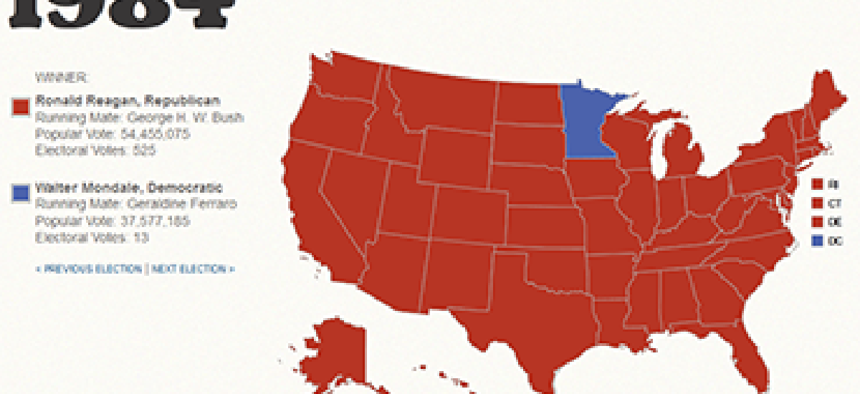NARA map shows elections past and future

An interactive online map allows users to research past presidential elections or apply state-by-state scenarios to the current one to see how various state wins or losses affects electoral vote totals.

NARA's interactive electoral college map, here set to show Ronald Reagan's landslide 1984 win, allows users to look up past elections and test scenarios in the current contest.
The 2012 election may be hard to predict, but there are still ways for citizens to estimate how many Electoral College votes each candidate will receive come Tuesday. On Nov. 1, the National Archives’ Office of the Federal Register released an interactive map that displays current, historical and hypothetical election data in a visual manner.
Since 2004, the National Archives has displayed electoral vote predictions as a calculator in text form, but this year has switched to the easier-to-use map interface. The Federal Register will also use the map to display electoral votes as they come in on Tuesday, Nov. 6. Users may then share their predictions via Facebook or Twitter, and the Electoral College website keeps a running tally of each prediction.
“We really designed the new section to display information and for people to use as an educational tool. Social media was not our primary focus, but we recognize that it can be an important tool, so we’re happy we were able to add that function,” Federal Register Staff Attorney Miriam Vincent said.
The site, titled “2012: Make Your Prediction,” features a map of all 50 states, with the option to click once to turn the state red for Romney, and click twice to make the state blue for Obama. Election data from every presidential election starting in 1964 is available as red and blue maps with specific popular and electoral vote amounts.
The Federal Register has also posted a video explaining how the Electoral College process works. The video is not subject to any copyright restrictions, allowing its use and free distribution. At press time, the statistics for web traffic were not available.
NEXT STORY: Acquisition: Bridging the communication gaps





